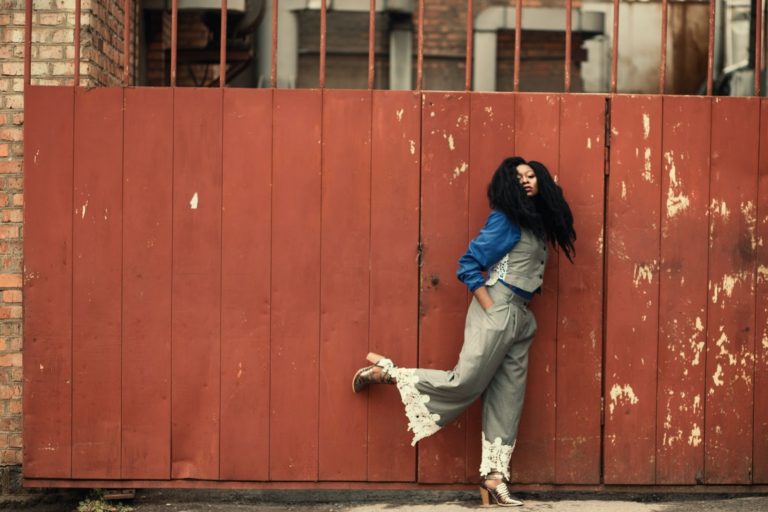Sustainable Fashion: What It Is, Why We Need It and How to Give It a Try!

With awareness of sustainability and its impact on our planet growing, more and more people are making efforts to be kinder to the world around them. And what can have a bigger impact than the clothes we choose to wear?
Sustainable fashion is the movement towards creating clothing that is kinder to the world around us. It’s about ensuring that our clothes are made of high-quality materials that will last for as long as possible, while also being eco-friendly and ethically produced.
Many people think that sustainable fashion means sacrificing style or quality, but this couldn’t be further from the truth! There are plenty of ways you can incorporate sustainable principles into your wardrobe without compromising on looks or comfort. Here’s everything you need to know about sustainable fashion…
What is sustainable fashion?
The term “sustainable fashion” is used to describe garments that are kind to the planet at every stage of the production process. Clothing that is created in a way that prioritizes the well-being of its workers and the protection of their rights is sometimes referred to as “ethical fashion,” another phrase often used in the conscious consumerism community. (Note: For vegans, the omission of pelts, leather, and other animal fibers from clothing may also be considered an example of “ethical fashion.”) However, ethical and sustainable fashion are inextricably linked because ecology goes hand in hand with socially equitable methods.
Sustainable fashion refers to clothing that is designed to be kinder to both the people making it and the planet on which it’s made. It’s a concept that’s been around for decades, but in recent years it’s grown massively in popularity, getting a lot more attention in both the media and the fashion industry. The movement is all about making clothing that is ethically produced, reusable, and made from high-quality materials that will last for as long as possible (ideally for years and years).
Sustainable fashion is not only good for the environment; it’s also good for your wallet! When you buy quality pieces that you can wear for years, you don’t have to constantly be replacing your wardrobe, saving you money in the long run.
Why we need it
The fashion industry has a long and complicated history, one that’s not always been very kind to the environment or those involved in it. In the past, this has led to the use of unsustainable fabrics, unethical labor practices, and little to no efforts made toward reducing waste.
Unfortunately, many people still think that “sustainable” fashion means having to sacrifice style or quality. But with more companies and designers taking sustainable production seriously, this isn’t true anymore! There are now plenty of ways you can incorporate sustainable principles into your wardrobe without compromising on looks or comfort.
Try a zero-waste shop
One of the easiest ways you can make your wardrobe more sustainable is by shopping once in a while at a zero-waste shop! A zero waste shop is a place that sells second-hand items, but only ones that are ethically and sustainably sourced.
+ You can find items of all shapes and sizes at a zero waste shop, and you’re also supporting a business that’s trying to reduce waste and pollution by sourcing items that would otherwise be thrown away.
Another perk of shopping at a zero-waste shop is that you get to choose exactly what you want to buy. This means you can find pieces that are exactly your style, and that you’re comfortable in! No more settling for something because it’s the only thing that fits.
Try eco-friendly fabrics
Eco-friendly fabrics are made using natural materials, like organic cotton or hemp. They are often more sustainable than conventional fabrics, as they don’t require as much energy or water during production.
Low-impact natural and organic materials: Hemp, linen, cotton, silk, wool, leather, and cellulose fibers are preferred to virgin, petroleum-derived synthetics like polyester, acrylic, and nylon.
Natural fibers are biodegradable and can compost cleanly back into the soil (assuming no harmful chemical residues are left), unlike synthetic fibers, which won’t biodegrade and instead sit in landfills, leaching toxic chemicals and fumes. Hemp, linen, and organic cotton are sustainable natural fabrics. Some wools and plant fibers can be grown to rejuvenate soils and sequester carbon (which helps to combat climate change).
While cellulose fibers are plant-based, some are harvested destructively, aggravating deforestation, and many are manufactured using toxic chemicals.
Eco-friendly fabrics are stylish, versatile, and come in a highly diverse selection of colors and patterns. They’re perfect for making ethically-made garments, from everyday wear like jeans and t-shirts to special occasion pieces, like dresses and formal blazers.
Try organic fabrics
Organic fabrics are made with chemical-free materials that are grown without the use of pesticides or herbicides and the use of synthetic fertilizers. They may be slightly more expensive than conventional fabrics, but they’re often worth the price, as they’re kinder to the environment and the people producing them. Organic fabrics come in a range of different textures and patterns, making them a great option for sustainable fashionistas. You can use them to make a variety of garments, from casual tops and trousers to special occasion dresses.
How to make your current wardrobe more sustainable
There are plenty of ways you can make your existing wardrobe more sustainable. Here are some easy changes you can make that will have a big impact.
- Choose high-quality fabrics – Quality fabrics last longer and require less frequent washing, which means they’re less harmful to the environment. Make sure to check your clothing’s labels to see what materials it’s made from.
- Wash your clothes less frequently – This one may be hard to hear, but the more you wash your clothes, the quicker they’ll break down. Try to only wash them when they’re really dirty, and hang them to dry whenever possible.
- Repair your clothes – If you spot a hole or a tear, don’t throw the garment away! Instead, try to fix it by patching it or repairing it with a seam stitch. You can also find plenty of free or cheap sewing tutorials online for simple repairs.
Sustainable Fashion Brands to Know
- ALDI – ALDI’s clothing line is made from sustainably sourced materials, and is incredibly affordable, making it a great choice for sustainable fashionistas on a budget.
- Topshop – Topshop claims to be the first truly sustainable major fashion retailer, and has partnered with Ethical Fashion Partnership (EFF) to make it happen. Their collections are made from sustainable fabrics, like organic cotton and recycled polyester.
- H&M – H&M has made significant progress toward more sustainable production, including partnering with the Sustainable Apparel Coalition. Their garments are made from sustainable materials, including recycled polyester and organic cotton.
- Svala – Svala makes vegan handbags, purses, bags, and totes. Each bag is handcrafted in LA using premium vegan PU, cork, and Piatex.
- 337 BRAND- 337 BRAND makes comfortable leisurewear. The brand creates easy-to-wear clothes from eco-friendly fabrics.
- Toad&Co- Toad&Co offers socially and environmentally responsible womenswear and menswear for the trail or tavern.
- Everlane – Everlane makes high-quality clothing and accessories, but sells them at competitive prices, making their products a great option for any sustainable fashion lover on a budget.
Conclusion
Now that you know everything there is to know about sustainable fashion, it’s time to put it into action! Start by checking out your closet, and make a list of the items you’d like to keep, and the ones you’d like to replace. Then, once you’ve got your shopping list ready, you can start checking out some zero waste shops and organic fabric brands to see which pieces would suit you best. When you’re done shopping for new pieces, you can also make some simple modifications to your existing clothes to make them more sustainable.






